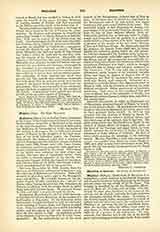

Malabar. —In its narrower application Malabar is the name of a district of British India stretching about 145 miles along the west coast, south of Mangalore, and belonging to the Madras Presidency, bounded on the north by South Canara, on the east by Coorg, Mysore State, the Nilgiris and Coimbatore, and on the south by the Native State of Cochin. Its chief towns are Cannanore, Tellicheri, Calicut (the capital), and Palghat. In its older, wider, and popular significance the Malabar Coast includes, not only the district of Malabar, but also the Native States of Cochin and Travancore down to Cape Comorin—in fact the whole southwest corner of India as far back as the ghaut line. The ancient form of the name was Male, “where the pepper grows”, whence the name Malayalam for the prevailing language. Ecclesiastically, British Malabar belongs to the Diocese of Mangalore; the Cochin State comprises the Padroado, Diocese of Cochin, the Archdiocese of Verapoly, and the three Vicariates Apostolic of Trichur, Changanachery, and Ernaculam; while the Travancore State is covered by the Diocese of Quilon, the divisions being in each case approximate. The name Malabar is used in the connection with the “Syrian Christians of Malabar”, chiefly found at the present day in the three vicariates just mentioned. The so-called “Malabar Rites” had nothing to do with Malabar proper, since the scene of the dispute was at Madura, on the opposite side of the peninsula. The term seems to have arisen from the fact that the Madura mission was part of the Malabar Province of the Society of Jesus. (See Malabar Rites; Saint Thomas Christians; and the various dioceses above mentioned.)
ERNEST R. HULL

